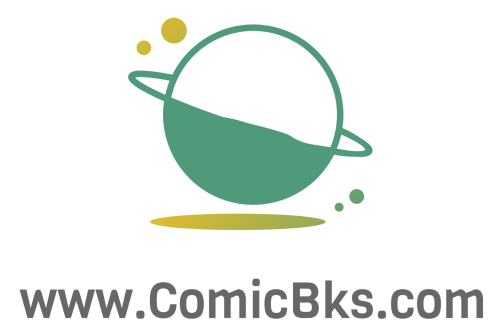Hello, fellow comic book aficionados! Today, we’re embarking on an exciting journey through the pages of Marvel Comics to explore one of its most iconic creations: The Fantastic Four. This team isn’t just a group of superheroes; they’re a pivotal part of comic book history, revolutionizing the genre with their debut. So, grab your favorite issue, get cozy, and let’s delve into the world of Marvel’s First Family.
Introduction to the Fantastic Four
In the early 1960s, the comic book industry was undergoing a transformation. Amidst this backdrop, writer Stan Lee and artist Jack Kirby introduced the Fantastic Four in The Fantastic Four #1, published in November 1961. This marked a turning point in comic book storytelling, introducing a team that would become central to the Marvel Universe.
The Birth of Something Fantastic
- Creation: The Fantastic Four was Marvel’s answer to the growing demand for superheroes. Lee and Kirby wanted to create characters that were distinct and relatable.
- First Issue: Their first issue was groundbreaking. Unlike the flawless superheroes of the past, the Fantastic Four were flawed, with human emotions and problems.
Members of the Fantastic Four
- Mr. Fantastic (Reed Richards): The brilliant scientist and leader of the group, known for his ability to stretch his body into incredible lengths and shapes.
- Invisible Woman (Susan Storm): Initially the Invisible Girl, Susan can become invisible and later develops the power to create force fields.
- Human Torch (Johnny Storm): Susan’s younger brother, who can engulf his body in flames and fly.
- The Thing (Ben Grimm): A former astronaut, transformed into a rock-like creature with immense strength.
Cultural and Social Impact
The Fantastic Four did more than entertain; they reflected and influenced the cultural and social changes of their times.
Breaking Stereotypes and Embracing Change
- Family Dynamics: The team’s portrayal as a bickering but loving family mirrored the complexities of real-life relationships.
- Social Issues: Over the years, the Fantastic Four dealt with issues like race, identity, and the environment, making them relevant to their readers.
Women in Comics: The Evolution of Susan Storm
- Early Portrayal: Susan Storm’s early portrayal was typical of the era – often a damsel in distress.
- Growth and Strength: Over time, Susan became one of the strongest members of the team, a shift reflecting society’s changing views on women.
The Fantastic Four in Pop Culture
The influence of the Fantastic Four extends beyond the comic book pages, infiltrating various aspects of popular culture.
Cinematic Adventures and TV Shows
- Film Adaptations: The Fantastic Four have been adapted into several films, each with varying degrees of success.
- Animated Series: The team has appeared in multiple animated TV series, introducing them to new generations.
Merchandise and Beyond
- Action Figures and Games: The Fantastic Four have been immortalized in action figures, video games, and other merchandise, becoming a staple in pop culture.
The Legacy and Influence on Comic Book Storytelling
The Fantastic Four’s greatest impact may be on the comic book industry itself.
Pioneers in Storytelling
- Narrative Depth: Their stories often blended science fiction with superhero elements, creating a rich narrative tapestry.
- Character Development: The evolution of the characters, especially the maturation of Johnny Storm and the leadership of Reed Richards, set new standards for character development.
Influencing Future Creations
- Inspiring Other Teams: Their success paved the way for other Marvel teams, like the X-Men and the Avengers.
- Artistic Inspiration: Jack Kirby’s dynamic art style in the Fantastic Four became influential, inspiring countless artists.
FAQs about the Fantastic Four
Q: Why are the Fantastic Four called Marvel’s First Family?
A: They’re termed this due to their pioneering role in Marvel’s history and their portrayal as a family unit, a first in superhero comics.
Q: Has the team always been composed of the same four members?
A: While the core members remain constant, there have been temporary additions and substitutions over the years.
Alternative Perspectives and Critiques
While the Fantastic Four are celebrated, they are not without their critiques.
The Struggle to Stay Relevant
- Modern Relevance: Some argue that the
Fantastic Four struggle to stay relevant in today’s comic book landscape, overshadowed by more popular teams like the Avengers.
Representation and Diversity
- Early Lack of Diversity: Initially, the team lacked diversity, reflecting the era’s limited representation in comic books.
- Evolving Perspectives: Over time, Marvel has addressed this, introducing characters from various backgrounds into the Fantastic Four universe.
The Art of the Fantastic Four
Let’s not forget the incredible art that brought the Fantastic Four to life.
Jack Kirby’s Legacy
- Kirby’s Style: Jack Kirby’s dynamic, energetic art style defined the look of the Fantastic Four and influenced generations of comic book artists.
- Innovations: Kirby introduced concepts like the “Kirby Krackle” to depict energy and power, adding a unique visual element to cosmic scenes.
Modern Interpretations
- Changing Aesthetics: Over the years, different artists have brought their unique styles to the Fantastic Four, keeping the visuals fresh and exciting.
The Future of the Fantastic Four
What does the future hold for Marvel’s First Family?
New Storylines and Adaptations
- Continued Comics Presence: The Fantastic Four continue to be a staple in Marvel comics, with new storylines exploring contemporary issues.
- Potential Movie Reboots: There’s ongoing speculation about potential reboots in the Marvel Cinematic Universe, which could introduce the Fantastic Four to a new audience.
The Role in the Larger Marvel Universe
- Crossovers and Collaborations: The Fantastic Four often play crucial roles in major Marvel crossover events, highlighting their significance in the larger Marvel narrative.
In Closing: Why the Fantastic Four Matter
The Fantastic Four aren’t just another superhero team; they’re a symbol of innovation, family, and the evolution of comic book storytelling. They’ve faced cosmic threats and personal challenges, all while reflecting the changing world around us.
Engage with Us!
- Your Favorite Moments: What are your favorite Fantastic Four moments or story arcs? How have they influenced your view of comics?
- Character Resonance: Which member of the Fantastic Four resonates most with you, and why?
Feel free to share your thoughts and opinions in the comments. If there’s a particular aspect of the Fantastic Four or any other comic book topic you’d like us to explore next, let us know!
Remember, whether you’re a lifelong fan or just discovering the Fantastic Four, their stories offer something for everyone. They remind us that being a hero isn’t just about superpowers; it’s about facing life’s challenges together.

